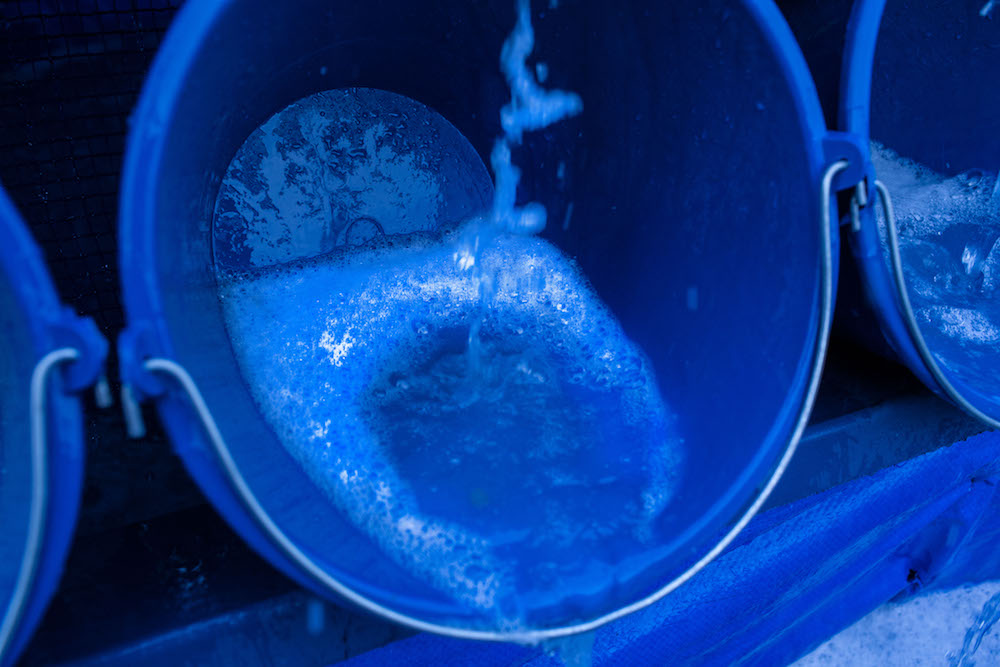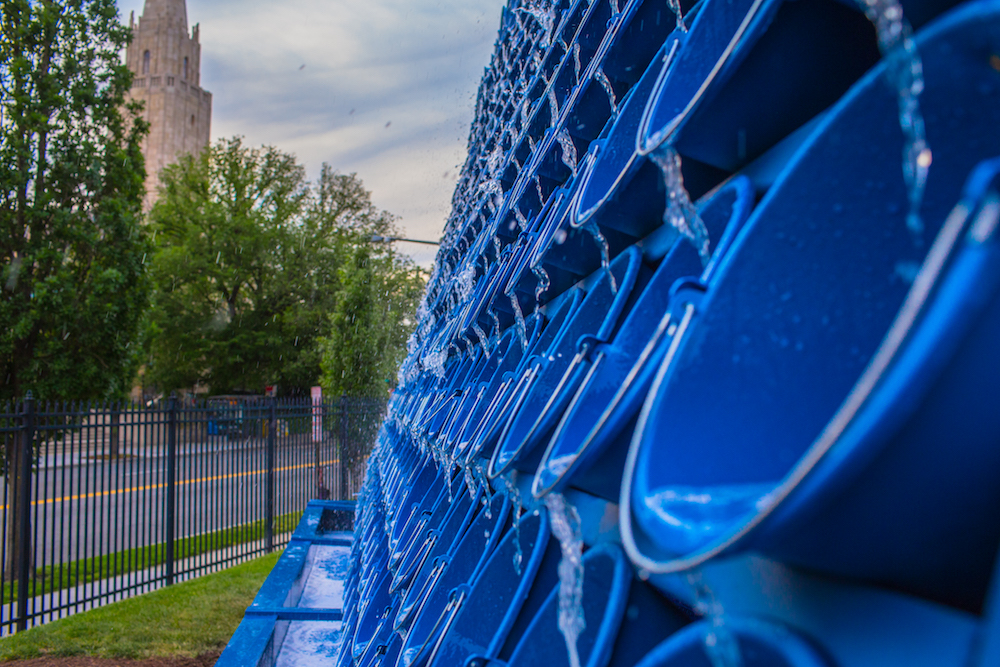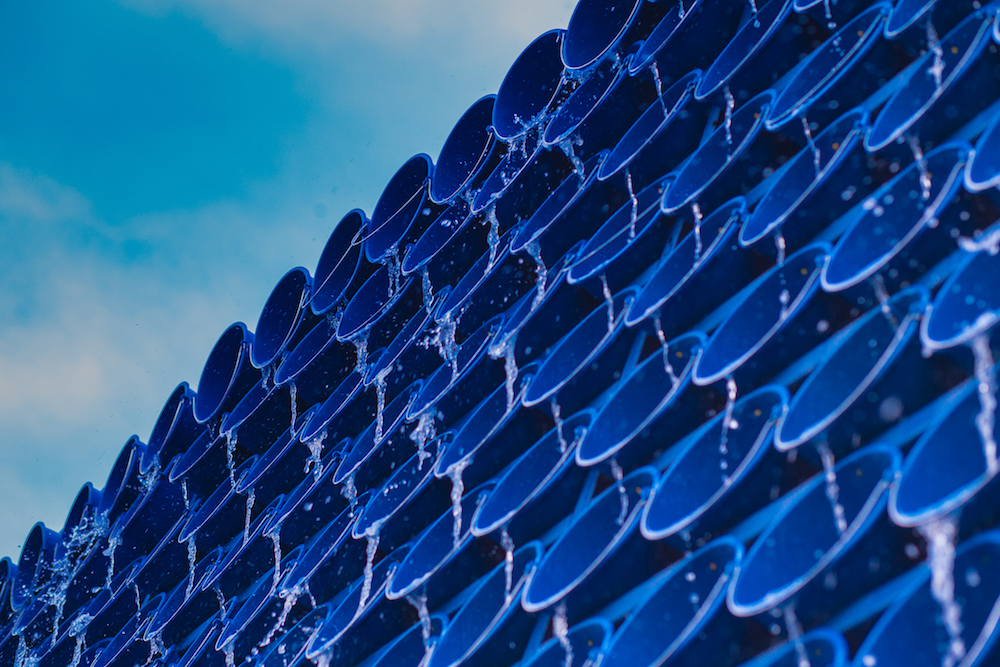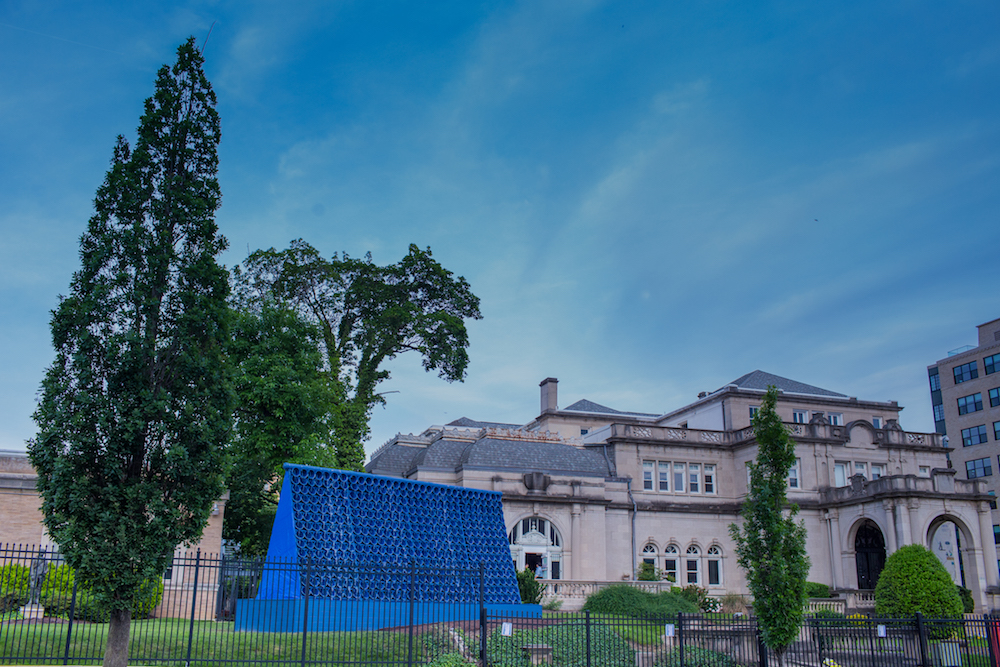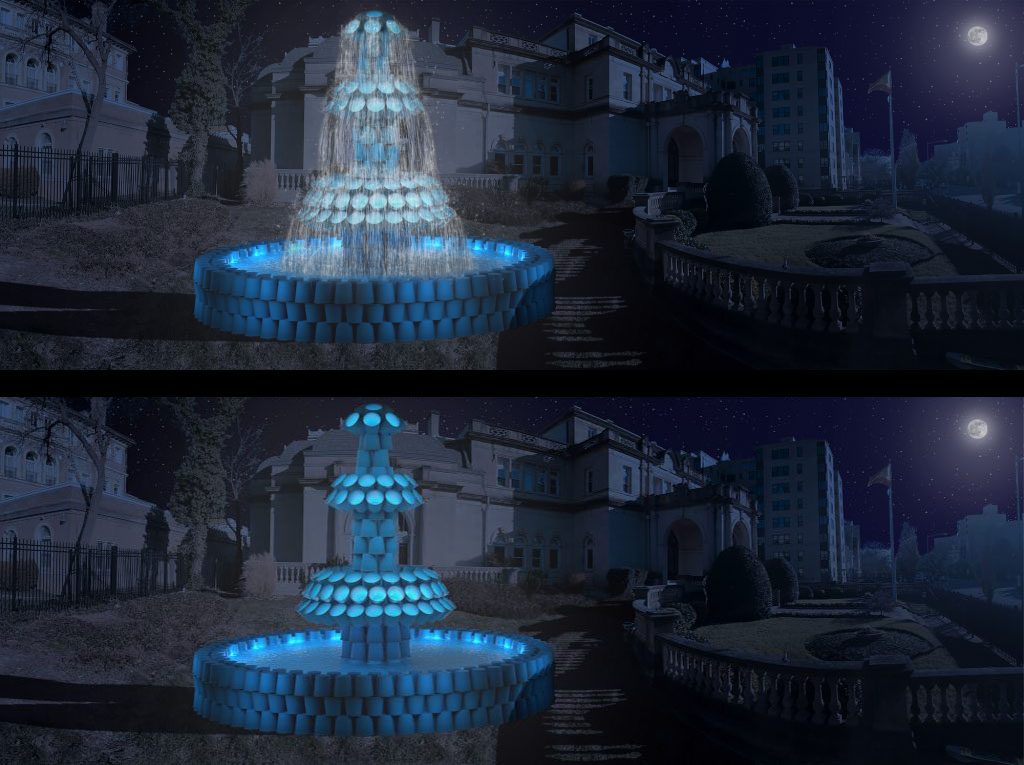Let’s Go Fetch Water! / ¡A por agua!











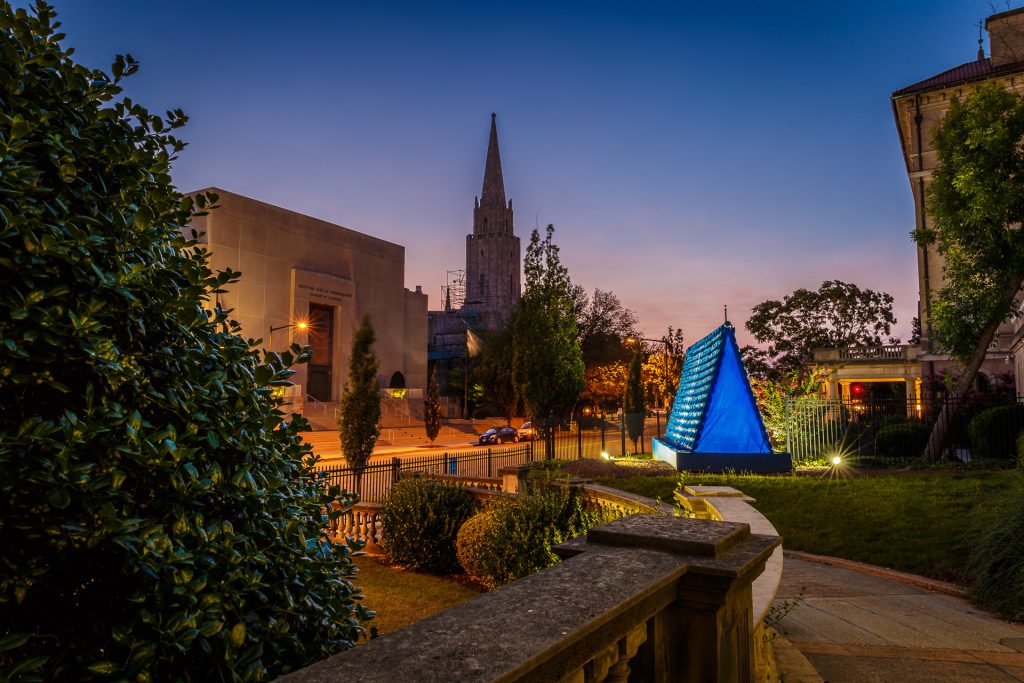


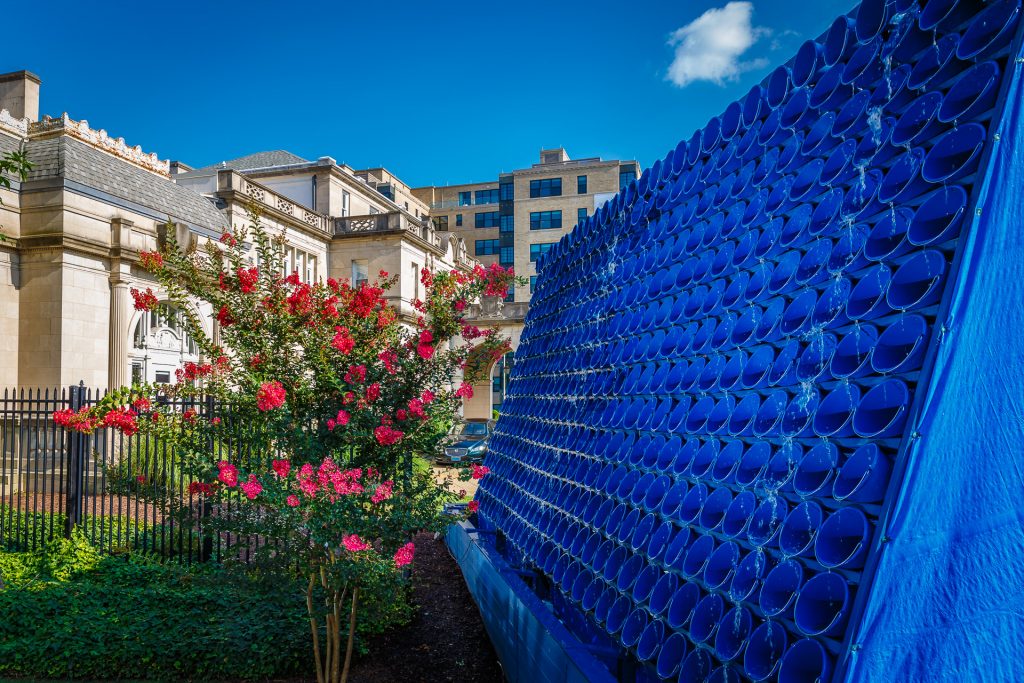



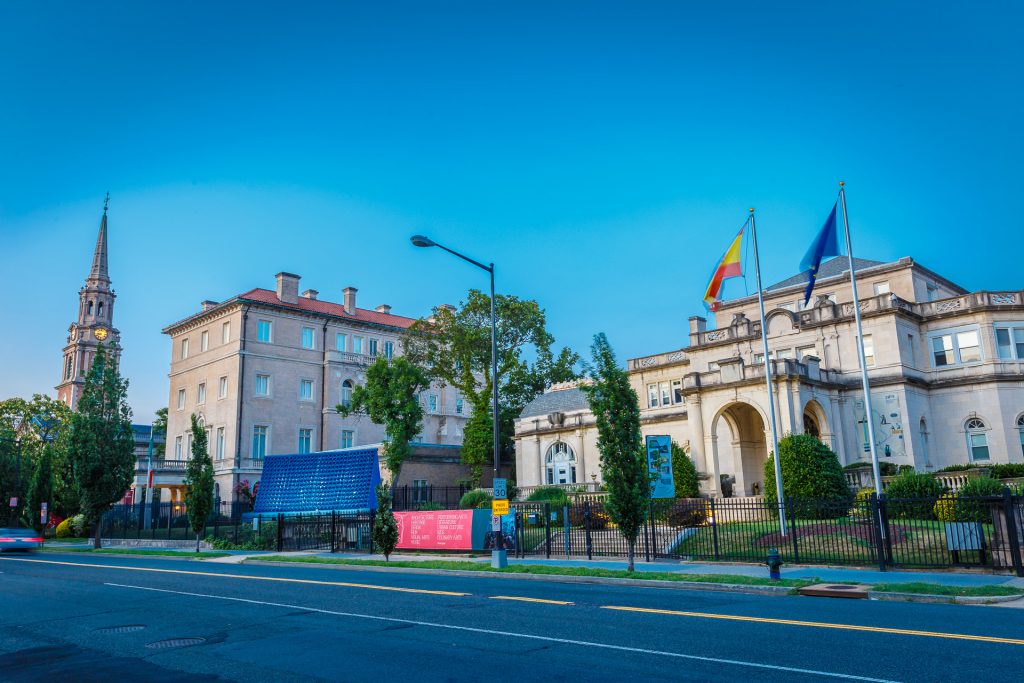


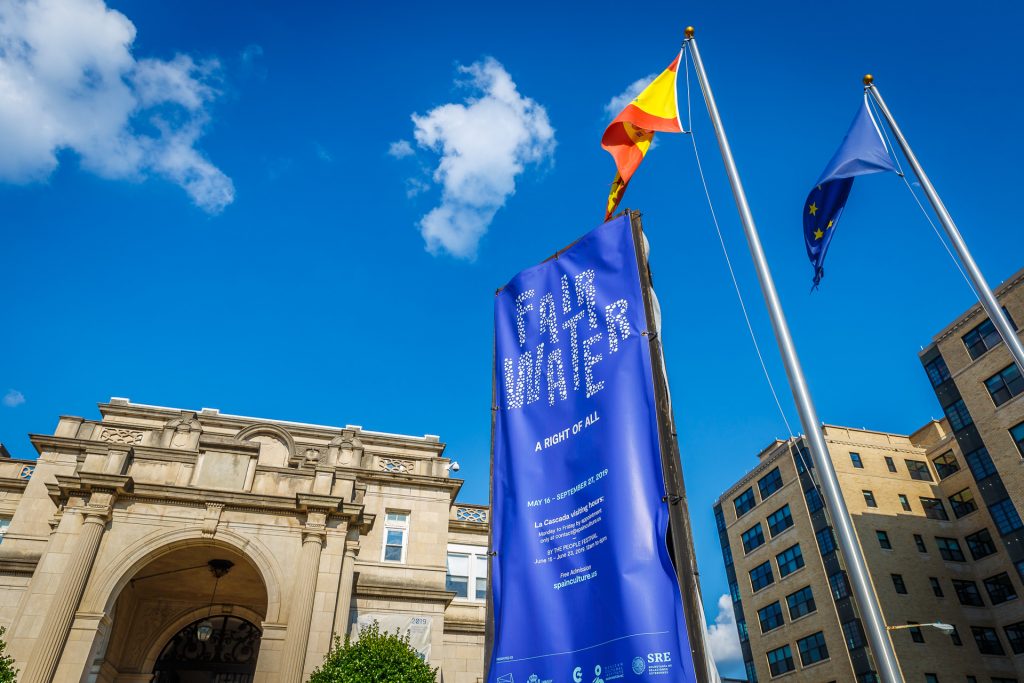











Pictures: David Keith
Video: Melisa Hernández
Boundaries between Spain and Mexico were removed last May in Washington D.C. to host our piece: Let’s Go Fetch Water! Very gratifying in times of walls…
A waterfall made with a wooden structure and plain-looking buckets made with recycled material, similar to those used around the world to fetch the water for a family’s basic supply. This hard work is commonly assigned to the women in the household.
These buckets transport this precious liquid from fountains and wells and are even hoisted down to the depths of the Earth in order to get it. They later carry them through long perilous trails during grueling journeys where not even a drop must be spilled.
This is the material we chose to build a piece which states our human right to water.
During the daytime, the sound and the water mingle with street life. However, during the night, the piece stands out and imposes itself, with strange defiance, over the area’s stately buildings.
We did not want to create a merry overflowing waterfall sliding and leaping joyfully through the buckets. On the contrary, it flows slowly and accurately trying not to waste a drop as it falls.
The buckets receive and distribute the slow-flowing current trying somehow to depict that grievous journey for water which millions of people embark on everyday in order to have access to a natural resource which all of us should have available at our homes
We all know water is scarce. Climate change is one the main reasons. However, questionable privatizations are also to be blamed. Governments lacking financial resources give up this resource to private companies in exchange for supply infrastructures. Other governments just sell their aquifers and springs to large food and beverage corporations which exploit these and everything around dry, leaving local inhabitants in deep crisis.
We have enjoyed this particular commission since we have, for a long time, been dealing with issues concerning the recycling of plastic material and we have experienced, first hand, how these companies that sell someone else’s water and seem to be especially focused on launching awareness campaigns for a responsible use of plastic, only try to deviate attention from this uncomfortable privatization issue.
They usually rely on artists to eco-wash their image. Only by searching on Google, one can find what and who is hiding behind many of the most popular spots dealing with recycling issues. We’re just saying…
We want to thank the Embassy of Spain in Washington D.C. and the Mexican Cultural Institute of Washington D.C. for making room for us in their fence and their program, which is dedicated this year to the “Human Right to Water and Sanitation”.
We also want to thank Marta Pita, Lola Vico, and all the great team of professionals at the Spanish Cultural Office who made this complicated piece possible. Also, many thanks to David Keith and Melisa Hernández for the photos.
The Waterfall will be in display from May 16 to September 27, between the Former Residence of the Ambassador of Spain and the Mexican Cultural Institute. It is better to go at night, of course.
Note: This piece was carried out with wood and buckets made with recycled material. It was hard to get them since this material can be easily brought from China and no one ever considers manufacturing it, let alone with recycled material. We finally found a manufacturer and it was thanks to this that this piece was carried out.
In addition, water is supplied to the Waterfall by means of a closed loop which wastes almost no water, especially in a city as rainy as Washington D.C.
All the material will be recycled after the piece is dismantled in September. The wood will be used in new constructions and the buckets will be handed over to a company that will grind them and turn them into raw material for new products. We wish they could be buckets again, since there is nothing as commonplace as that in our lives…
P.S. We are soon hoping to build the fountain version of this piece.
Time of installation: 10 days.
Damages: none.
Exhibition time: 4 months.
—————
El pasado mes de mayo en Washington se eliminaron barreras entre España y México para acoger nuestra pieza: Let’s Go Fetch Water!. Muy gratificante en tiempo de muros…
Una cascada hecha con estructura de madera y cubos de material reciclado de apariencia modesta, similares a los que se usan en todo el mundo para ir a buscar agua con la que abastecer las necesidades más básicas de la familia. Este duro trabajo es comúnmente encomendado a las mujeres de la casa.
En ellos transportan el prediado líquido desde las fuentes y los pozos, llegando incluso a descolgarse hasta las profundidades de la tierra para conseguirlo. Después, cargan con ellos por largos y peligrosos caminos durante extenuantes jornadas siempre cuidando que no se derrame ni una gota.
Este el material que elegimos para construir una pieza que habla sobre el derecho universal al agua potable.
Durante el día, el sonido y el agua se mezclan con la vida de la calle, pero es de noche cuando la pieza toma protagonismo y se impone, extrañamente desafiante, a las construcciones señoriales de la zona.
No hemos tratado de crear una cascada alegre y rebosante de agua, que se deslice saltarina y festiva por los cubos, por el contrario, el agua corre lenta y precisa, tratando de no desperdiciar gotas en su caída.
Los cubos son a la vez receptores y repartidores del caudal que se desliza lento y que de alguna manera quiere emular ese tortuoso camino del agua que recorren millones de personas cada día, para conseguir un recurso natural al que todos deberíamos tener acceso directo desde nuestros hogares.
Por todos es sabido que el agua escasea, el cambio climático es una de las causas principales, pero también tienen la culpa privatizaciones muy cuestionables. Gobiernos con pocos recursos económicos ceden su explotación a empresas privadas a cambio de que ellas creen las infraestructuras para el suministro, otros directamente venden sus acuíferos y manantiales a grandes corporaciones relacionadas con la alimentación y las bebidas embotelladas, que los explotan hasta dejarlos seco junto con todo lo que hay alrededor, creando verdaderas crisis entre los habitantes del territorio.
Este encargo nos ha gustado especialmente ya que llevamos mucho tiempo tratando temas relacionados con el reciclaje de material plástico y hemos comprobado en nuestras carnes que son las mismas empresas que comercian con el agua ajena, las más interesadas en crear campañas de concienciación sobre el uso responsable del plástico, sin otro fin que el de desviar la atención sobre este otro temazo de la privatizacion.
Ellos suelen contar con la inestimable ayuda de artistas que finalmente les hacen un eco-lavado de cara. Sólo hay que hacer una búsqueda em Google para comprobar qué y quién se esconde detrás de muchas de las piezas de más impacto mediático relacionadas con temas de reciclaje. Ahí lo dejamos…
Gracias a la Embajada de España en Washington y al Instituto Cultural de México en Washington por hacernos hueco en su valla y en su programación, que este año está dedicada al “Derecho Humano al Agua Potable y al Saneamiento».
También a Marta Pita, a Lola Vico y a todo el equipo de grandísimos profesionales de la Oficina Cultural Española por hacer posible esta complicada pieza. Gracias además a David Keith y a Melisa Hernández por las imágenes.
La Cascada se podrá ver del 16 de mayo al 27 de septiembre en Washington entre la Former Residence of the Ambassadors of Spain y el Mexican Cultural Institute. Mejor ir de noche, por supuesto
Nota. La pieza se ha llevado a cabo con madera y con cubos hechos de material reciclado. Conseguirlos ha sido complicado, ya que es un material tan fácil de traer de China que casi nadie se plantea fabricarlo y menos con material reciclado. Finalmente dimos con un fabricante y gracias a esto, la pieza se pudo llevar a cabo.
Además, La Cascada se abastece de agua por medio de un circuito cerrado que reduce el gasto al mínimo, más teniendo en cuanta lo que llueve en Washington.
Tras el desmontaje en septiembre, todo el material será reciclado, la madera se usará en nuevas construcciones y los cubos entregados a una empresa que los triturará y convertirá en materia prima para nuevos productos. Ojalá pudieran ser cubos, que no hay nada mas común en nuestras vidas…
Tiempo de instalación: 10 días
Daños ocasionados: 0.
Permanencia de la intervención: 4 meses.
P.D. Estamos deseando poder construir la versión formato fuente de esta pieza.
Video: Melisa Hernández
,


